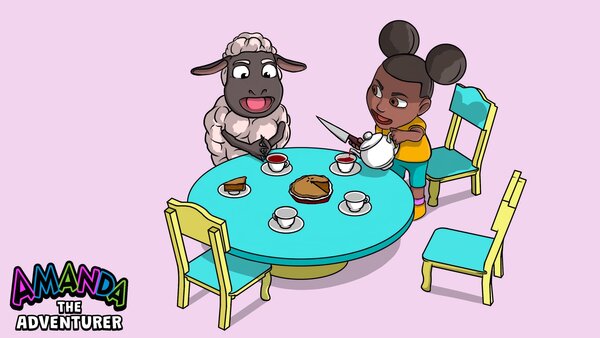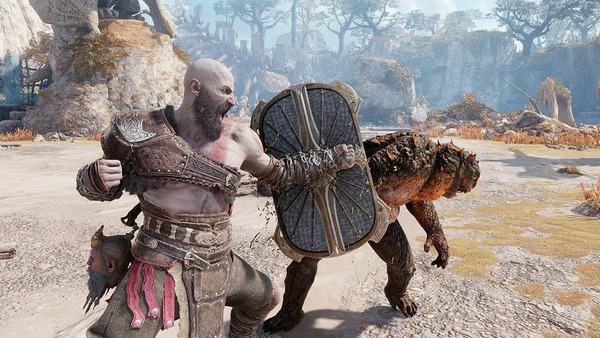Popular Now
In Amanda the Adventurer, players are lured into what appears to be a simple, nostalgic children's VHS show. But beneath the cheerful facade lies a dark and disturbing tale. While Amanda is the central figure, the character that stands out in depth, fear, and emotional complexity is Wooly the Sheep. This article explores the psychological unraveling of Wooly—a sidekick who increasingly becomes a symbol of rebellion, fear, and tragic futility. His character is not just a foil to Amanda’s descent into madness but also a critical narrative device that transforms the game from a creepy simulator to a layered psychological horror experience.
This is not a general look at the game. Instead, we delve deeply into Wooly's progression, his behavior across tapes, and how his subtle cues, resistance, and eventual fate enrich the player’s understanding of the game’s story and emotional gravity.
1. Wooly’s Introduction: The Silent Sidekick

Wooly the Sheep is introduced in the earliest VHS tapes as Amanda’s soft-spoken friend. His demeanor contrasts Amanda's overly cheerful tone. He responds to Amanda’s prompts with polite hesitancy and is often ignored or talked over. At this stage, Wooly appears harmless—a typical sidekick in a children’s program.
But even from the beginning, Wooly's eyes flicker with unease, and his body language often suggests discomfort. He’s not excited to participate in the activities Amanda proposes. This early portrayal establishes Wooly as passive yet observant—a character more “real” than Amanda, hinting he may be aware of their artificial reality.
2. Early Signs of Resistance
As the tapes progress, Wooly’s unease becomes more pronounced. In episodes like the grocery store and the meat shop, Wooly visibly objects to Amanda’s aggressive tone or her strange responses to player input. He tries to warn the player—sometimes through whispered lines, sometimes through direct objections.
One key moment occurs when Amanda insists on buying meat, despite Wooly’s discomfort. He nervously suggests alternatives, but Amanda overrules him. This interaction reveals the first signs of conflict between the two characters and presents Wooly as a growing symbol of moral resistance within the game.
3. Breaking the Fourth Wall
Wooly's role evolves from being Amanda’s companion to addressing the player directly. He glances at the camera with worried expressions or mouths phrases like “Don’t listen to her.” These moments are brief but intentional—breaking the fourth wall in a subtle but chilling way.
Wooly’s behavior indicates that he knows he’s inside a tape. His attempts to communicate with the player blur the lines between in-game character and real-world victim. This creates a sense of urgency: Wooly isn't just acting—he’s trying to survive.
4. Censorship and Consequences
As Wooly continues to resist Amanda’s increasingly sinister behavior, the tapes begin to censor or glitch him out. In one tape, just as Wooly is about to reveal something important, the video distorts and cuts him off. Amanda immediately takes over, smiling as if nothing happened.
This censorship implies that Amanda—or whatever force is controlling her—views Wooly as a threat. His desire to speak the truth must be suppressed. These cut-offs become more frequent, painting a terrifying picture: even within this fictional world, truth is punishable.
5. Subtext of Abuse and Control

Wooly's fear isn’t just directed at Amanda’s words—it’s a response to control and psychological abuse. Amanda demands correct answers and punishes deviation. Wooly is the only one who resists, and in doing so, he becomes a victim of Amanda’s need for obedience.
This dynamic parallels real-world abusive relationships. Amanda gaslights and overrides Wooly, ignores his feelings, and punishes him for disobedience. Wooly’s increasingly anxious behavior captures the trauma of living under control, enhancing the game's emotional and narrative depth.
6. Wooly's Pleas: Desperate Warnings to the Player
Midway through the game, Wooly begins begging the player to stop watching the tapes. “We shouldn’t be doing this,” he whispers. “She’s watching us.” These warnings are often ignored by the gameplay structure, forcing players to continue despite his pleas.
This dynamic creates a layered psychological experience. Players are made complicit in Wooly’s suffering. His pleas aren’t just narrative—they are ethical triggers, making us question our role in Amanda’s world. This is a horror of responsibility, not just fear.
7. Wooly's Knowledge of the Loop
Eventually, it becomes clear that Wooly has some understanding of the game’s looping structure. He reacts differently when players replay tapes. In some cases, he repeats lines with more urgency or changes them altogether. He knows this has all happened before.
This awareness makes Wooly both tragic and brave. He’s fighting a battle he knows he cannot win. His attempts to escape the loop—and pull the player out with him—highlight the futility of resistance in a controlled system. Yet he never stops trying.
8. Symbolism of Wooly’s Identity

Wooly isn’t just a sheep—he is the sheep. His species is symbolic: sheep follow blindly, yet Wooly is trying to break free. The irony of his form versus his actions adds a deeper thematic layer to his character arc.
His woolly appearance also reinforces his vulnerability. Unlike Amanda, who becomes aggressive and monstrous, Wooly remains soft and emotionally raw. He’s defenseless in a world that’s becoming increasingly hostile, which makes his resistance even more meaningful.
9. The End of Wooly: Silenced for Good
Near the game's end, depending on player choices, Wooly is either erased from the tapes, destroyed, or simply vanishes. His fate is ambiguous, but the message is clear—he loses. His resistance is not enough to stop Amanda or break the cycle.
This conclusion is deeply emotional. Wooly's story isn’t one of victory; it’s a slow, painful unraveling of hope. His voice was the only one that questioned Amanda, and without him, the player is left alone with her. The silence that follows Wooly's absence is deafening.
10. Wooly's Legacy: The Emotional Core of the Game
Though Wooly may not survive, his impact resonates. His small acts of rebellion, his glances at the player, and his whispered truths shape the entire game. He is the moral compass, the emotional anchor, and the symbol of resistance against manipulation.
Wooly’s character elevates Amanda the Adventurer from a clever horror game to a deeply affecting experience. His journey forces players to reflect on complicity, power dynamics, and the cost of truth. In a world filled with lies, Wooly dared to speak.

Conclusion
Wooly the Sheep is more than just a sidekick in Amanda the Adventurer. He’s a tragic hero—afraid, aware, and determined to resist, even in a world where resistance seems futile. His journey from silent observer to desperate rebel provides emotional gravity to the game’s horror. Through subtle glances, whispered pleas, and quiet bravery, Wooly transforms into the emotional heartbeat of the story.
This deep dive into Wooly’s narrative arc shows how indie horror can use character development to elevate fear into something more profound. The true horror isn’t just Amanda’s transformation or her control over the player—it’s the silencing of the only voice that tried to do the right thing.

















